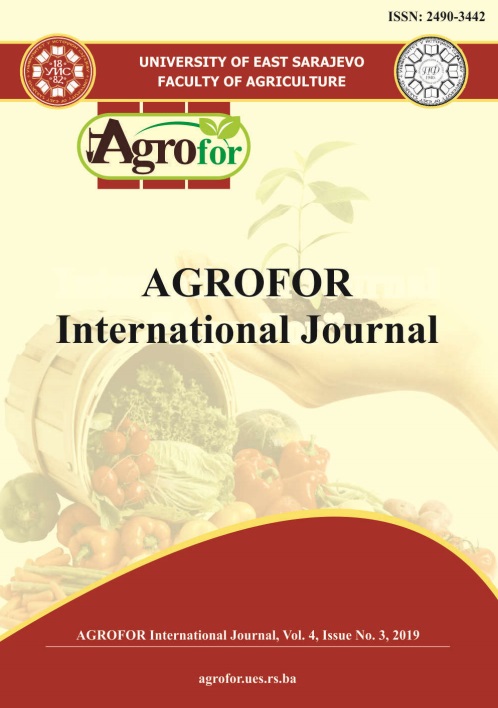ABSCISIC ACID AND IRRIGATION LEVELS EFFECTS ON MORPHOLOGICAL CHARACTERISTICS OF STRAWBERRY
DOI:
https://doi.org/10.7251/AGRENG1903025KAbstract
The high value of strawberries creates potential for high rates of employment and farm income in Turkey. Optimizing water application and effective cultivation practices are of considerable importance in improving strawberry yield. In this study, the effects of four different irrigation regimes and Abscisic Acid application (ABA use and control) effects on the leaf area, plant dry matter and crown number of strawberry (Fragaria × ananassa cv. Rubygem) were evaluated under Spanish type high tunnels conditions. ABA was applied three times starting from March to May via foliar application as 20 μmol L-1. From the initiation of the treatment to the end of the trial, a total of 552, 447, 342 and 237 mm of water were applied to treatments IR125, IR100, IR75 and IR50 respectively. The IR50 treatment caused a significant decline in morphological parameters, indicating that the amount of irrigation water did not meet the plant water requirement. The increased amount of irrigation water increased the leaf area, dry matter and the crown number significantly. Furthermore, the ABA application increased the leaf area by 15%, the plant dry matter 12% and crown number by 8%. Under water stress conditions (IR50), ABA significantly increased growth rate as well as increasing leaf area, plant dry matter and the crown number by 13%, 12% and 11%, respectively, when compared to the control plot. Consequently, in the protected cultivation, the IR125 irrigation level and the ABA application enhanced vegetative growth and in turn the total marketable fruit yield and its components.

